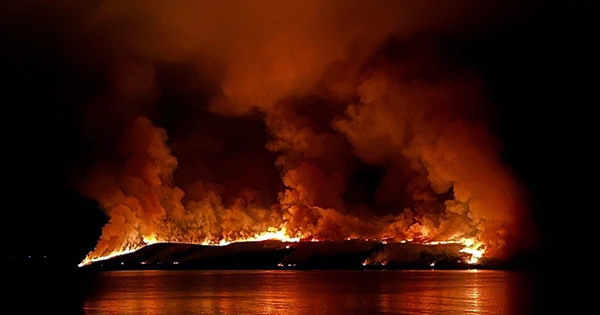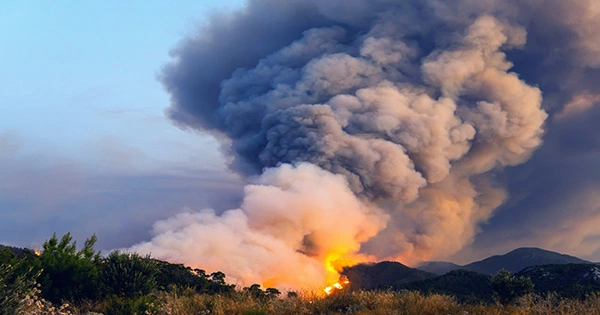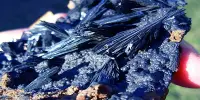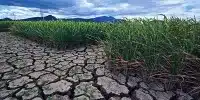New research reveals that a potent combination of smoke, atmospheric chemistry, and ultraviolet light can cause towering clouds of smoke sent into the stratosphere by fierce wildfires to eat away at Earth’s ozone layer.
Late 2019 and the beginning of 2020 saw Australia’s skies turn pitch-black from dense columns of stratospheric wildfire smoke. Afterward, satellite information showed that the smoke was interacting with atmospheric molecules in some manner to erode the ozone layer on Earth (SN: 3/17/22). But it wasn’t obvious how precisely that was taking place.
Scientists have now finished putting the parts of that chemical puzzle together. The team claims that once in the stratosphere, the smoke particles were able to interact with stratospheric gases as well as residual emissions of chemicals that degrade ozone. According to study published in the March 9 issue of Nature, when solar radiation was added, the smoky mixture began to produce chlorine radicals, a class of chemicals that have an affinity for attacking ozone.

According to the researchers, this sequence of incidents caused the ozone layer to thin by 3 to 5 percent in some areas of the Southern Hemisphere in 2020. Although only a tiny portion of the total, Susan Solomon, an atmospheric chemist at MIT, says that it matches the size of the effect of human emissions of ozone-eating chlorofluorocarbons during their peak.
Chlorofluorocarbons were once utilized in air conditioners and freezers, but their release into the atmosphere caused a significant hole over Antarctica in the ozone layer that shields the Earth from the sun’s ultraviolet radiation.
In the latest research, Solomon and her coworkers compared simulations of atmospheric chemistry to atmospheric observations of chlorine, ozone, and other molecules after the Australian bushfires. In 2020, satellites had detected the levels of several chemicals in the stratosphere, including chlorine nitrate and hydrogen chloride gas in addition to ozone. The tiers piqued Solomon’s interest.
In the satellite data, “what we saw over Australia was a tremendous decline in hydrogen chloride,” claims Solomon. “Gosh, this reminds me so much of Antarctica, I thought. How is this possible to be occurring over Australia?
Chlorofluorocarbons, which can persist for decades in the atmosphere, are broken down into hydrogen chloride gas as a byproduct. Because hydrogen chloride gas can dissolve into the icy clouds moving through the stratosphere at those temperatures, the cold climate over Antarctica played a significant role in the ozone hole’s creation. The cascade of reactions that results in the formation of ozone-depleting chemicals must first be initiated by the absorption of that gas.
Although the atmosphere over Australia is too mild for this process, satellite data showed that hydrogen chloride gas was still being removed from the atmosphere. The organic vapor particles were the problem, Solomon and her colleagues concluded. Even at higher temperatures, those particles can start to absorb hydrogen chloride gas, beginning that crucial first stage.
The smoke particles can function as catalysts with the hydrogen chloride they have ingested, accelerating other atmospheric reactions. Particularly, the particles accelerate the formation of chlorine compounds that are extremely photoreactive from other chlorine-containing gases floating in the stratosphere, such as chlorine nitrate and hypochlorous acid.
Chlorine radicals are free-roaming molecules that are highly chemically reactive and particularly enjoy attacking ozone molecules. They are created when the sun’s ultraviolet radiation reacts with those new chlorine compounds.
According to Solomon, the finding of this ozone-decaying wildfire-related process is a worrying potential setback to the ozone layer’s recovery. The 2010 Montreal Protocol forbade the use of chlorofluorocarbons, and the ozone hole over Antarctica has gotten smaller as a result (SN: 2/10/21). Since then, the ozone layer has begun to show symptoms of recovery, returning at a rate of about 1% every ten years, according to her.
However, Solomon continues, the smoke from the Aussie wildfires “wiped out all that hard work” for the year.
Global wildfire intensity and frequency are predicted to rise due to climate change, producing more soaring fire clouds in the atmosphere (SN: 12/15/20). According to Solomon, if these fires “are a one-time deal, it’s maybe not so terrible” for ozone recovery. But that is a separate matter if it occurs every five years.
According to Ross Salawitch, an atmospheric chemist at the University of Maryland in College Park who was not involved in the work, the study eloquently explains a number of perplexing satellite observations made in the aftermath of the Australian fires. He claims that it explains both the decrease in hydrogen chloride and the odd rises in other chlorine compounds like chlorine nitrate and chlorine oxide.
The “icing on the cake” is how the role of organic particles can help us better comprehend what determines the size of the ozone hole, according to Salawitch. He claims that this is crucial because “one of the unfortunate effects of global warming is likely an increase in the frequency and severity of wildfires,” in addition to the fact that we want to get the facts straight.














